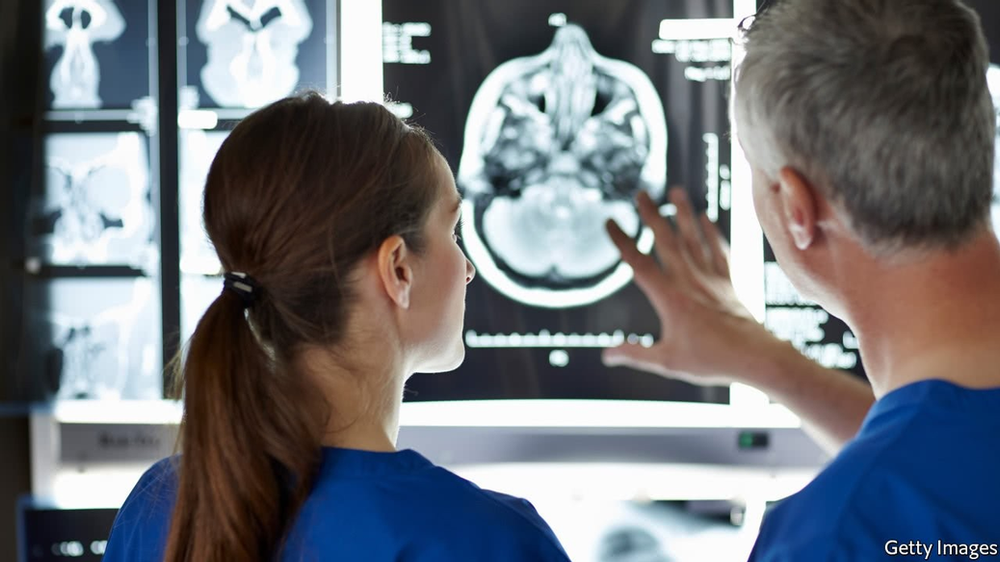
We are currently seeing a great rise in interest in the development and widespread use of artificial intelligence (AI) in medicine and healthcare. It penetrates a variety of areas, such as medical image analysis, natural language analysis, etc. AI has been, without exaggeration, the main topic of discussion at major international conferences such as RSNA and ECR. E-Health has become almost the main engine of the entire industry as a whole. AI-driven approaches are primarily seen as one of the most effective ways to improve the quality and accessibility of health care while reducing costs, including reducing ineffective, more rational use of resources and new methods of organizing work.
Today, AI technologies are most widely used in the medical industry in the field of radiology. The reason is obvious: today, 90% of all medical data are diagnostic images. Researchers at Stanford University (USA) predict an increase in data volume from 153 EB in 2017 (exabytes is a million terabytes) to 2,314 EB by 2020. Does a person have enough physical capabilities to process such colossal amounts of information?
Let’s take a look at this with an example of computed tomography (CT) research. The Hounsfield scale contains only 4 thousand units (the difference between the density of air and bone), while the monitor screen reproduces only 256 shades of gray. Of these, only 30 (!) Are perceived by the human eye. For the doctor to “read” the image, the level and width of the window are selected, which limit the amount of data received and analyzed by the clinician. Thus, a decrease in the information capacity of clinical images due to the limited capabilities of human vision can lead to diagnostic errors.
A major step in this direction was the first radiological AI system approved in Europe in October 2018 for detecting breast neoplasms. The manufacturing company has proven that, thanks to the use of a computer application, the quality of the assessment of mammography results has increased significantly compared to the conclusions that were carried out only by the efforts of radiologists.
Another similar example: at the McGill University Clinic in Canada, AI can predict Dementia with an accuracy of 84% years before a Patient develops these symptoms. The results of the studies were confirmed by follow-up observations: the subjects selected by the computer did indeed develop symptoms of dementia after 2-3 years.
The positive experience of using artificial intelligence in radiology is constantly updated with new cases. For example, in China, specialists from the AI Research Center for Neurological Disorders and the Metropolitan Medical University (Beijing) jointly developed the BioMind program, which correctly diagnosed 87% of Patients in 15 minutes, while the accuracy of doctors in diagnosis was only 66%.
Swedish medical company Elekta began using Watson for Oncology, an artificial intelligence medical system from IBM in June 2018. The system specializes in drawing up treatment plans for cancer patients. The same system has been successfully used in 68 oncology Clinics in China.
IBM estimates that medical images currently contain 90% of all medical data in the healthcare industry. Radiologists working in emergency departments review hundreds of images every day. Artificial intelligence is a modern, effective tool for data analysis and systematization, which can significantly improve the quality of medical care in all countries of the world.
Now we can say that the future of radiology is associated with highly advanced technologies. The radiologist of the future is a specialist who possesses both medical competencies and masterly possesses high-tech diagnostic methods, including those created based on AI. He does not compete with the machine but cooperates with it to get the best result.
In general, the dynamic development of AI in medicine is due to three key factors. First, the desire of medical institutions to improve their operational, financial and clinical efficiency. Secondly, the evolution in the field of radiology: the transition from the descriptive nature of the discipline to quantitative assessments. Thirdly, the need to increase the accuracy of research and reduce the number of diagnostic errors.
However, despite its potential, AI has yet to reach enough hospitals and facilities to achieve real results, and the technology adoption must grow rapidly for this technology to have a real impact.
Yet, within some business units, AI remains a mysterious and intimidating technology. So much so that AI is largely ignored by non-IT department decision makers – even knowing it can produce significant strategic and cost savings. Openix Solutions can help your Clinic to advocate implementation of AI and educate key stakeholders along the way of technology adoption. At the same time, Openix has AI-driven solutions of its own, for example AI platform to route images automatically based on image modality to different radiology specialities, significantly reducing turnaround time and lowering administrative costs across the board.




